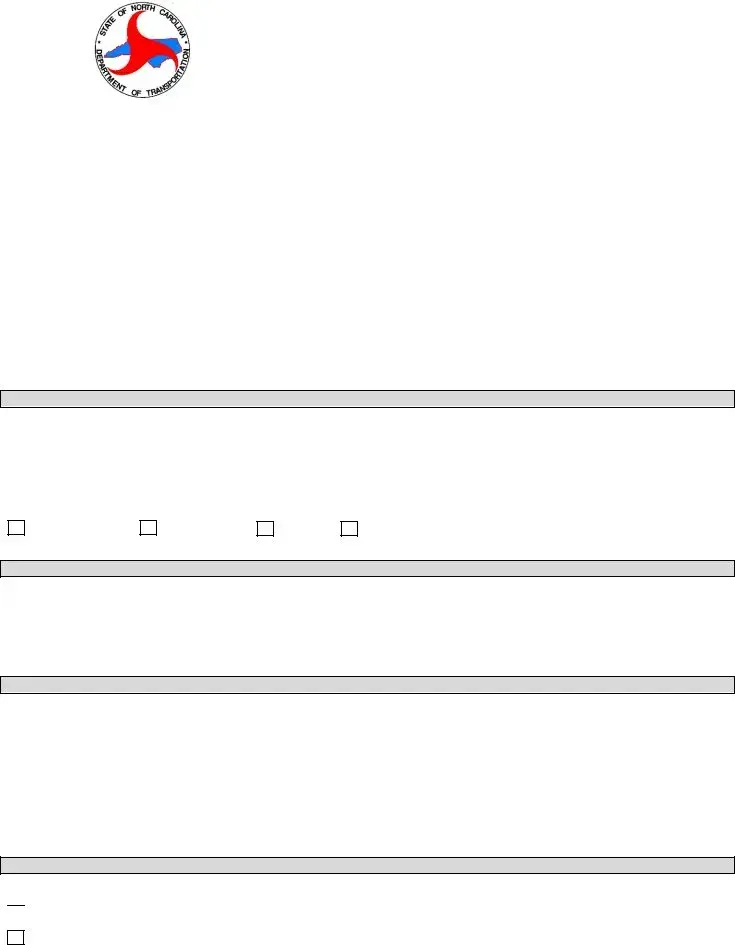The North Carolina PF-2 form, used for annual permit applications for non-divisible qualifying loads, shares similarities with forms across various states and contexts focused on oversize or overweight permits. These documents, while unique to their jurisdictions, parallel in their core purposes and types of information collected.
For instance, the Form 2290, Heavy Highway Vehicle Use Tax Return, is also crucial for commercial transports, requiring similar company and vehicle specifics. It ensures taxes are paid on heavy highway vehicles, paralleling the PF-2’s focus on regulatory compliance, albeit through a tax lens rather than permit application. Both forms collect detailed vehicle information, underscoring the legal responsibilities of operating large or heavy vehicles on public roads.
The Texas DMV's Form 1751, Over Axle Weight Permit, is another counterpart, specifically geared towards vehicles exceeding state weight limits on single axles or groups of axles. Like the PF-2, this form mandates detailed descriptions of the vehicle and its load, emphasizing the regulation of heavy transport activities to prevent damage to infrastructure and ensure road safety. The need for route specifics and load descriptions in both forms highlights the careful management required for oversized loads.
California’s Transportation Permit Application illustrates another parallel, focusing on the transport of oversized or overweight loads within the state. This form requires similar specifics about the company, vehicle, and the cargo being moved, akin to the PF-2’s requirements for load information and vehicle details. Both documents serve to regulate the movement of large cargoes, ensuring they meet state-level criteria for safe transport.
The New York State Department of Transportation Special Hauling Permit Application also aligns with the PF-2 form, albeit with a focus on New York's highways. This document gathers comprehensive information on the vehicle, its load, and intended travel routes, mirroring the PF-2's purpose of managing and approving the transport of non-divisible loads that exceed standard size or weight restrictions.
Moving away from state-specific forms, the Federal Motor Carrier Safety Administration (FMCSA) MCS-150, Motor Carrier Identification Report, although not a permit application, requires detailed vehicle and company information for safety compliance. The connection to the PF-2 lies in their mutual emphasis on vehicle particulars and operational data to facilitate regulatory oversight and enhance road safety.
The Oversize and Overweight Special Permit Application in Illinois shares the intent to authorize the movement of oversized or overweight loads on state roadways. Similar to the PF-2, applicants must provide exhaustive vehicle and load data, highlighting the nationwide need for meticulous regulation of extraordinary transport circumstances to protect infrastructure and ensure public safety.
Lastly, the Georgia Department of Transportation's Single Trip Permit Application resonates with the themes of the PF-2 by requiring detailed submissions about the transport vehicle and the cargo. Both are pivotal in permitting processes that mitigate the impact of heavy or large loads on roadways and ensure that such operations are conducted safely and within legal guidelines.
Collectively, these documents, while serving their unique state or federal purposes, embody the shared goal of regulating heavy or oversized vehicle transport. They ensure such activities are undertaken responsibly, with due regard for public safety, infrastructure integrity, and compliance with relevant laws.


 Company Check / Cashier’s Check / Money Order payable to NCDOT (
Company Check / Cashier’s Check / Money Order payable to NCDOT (